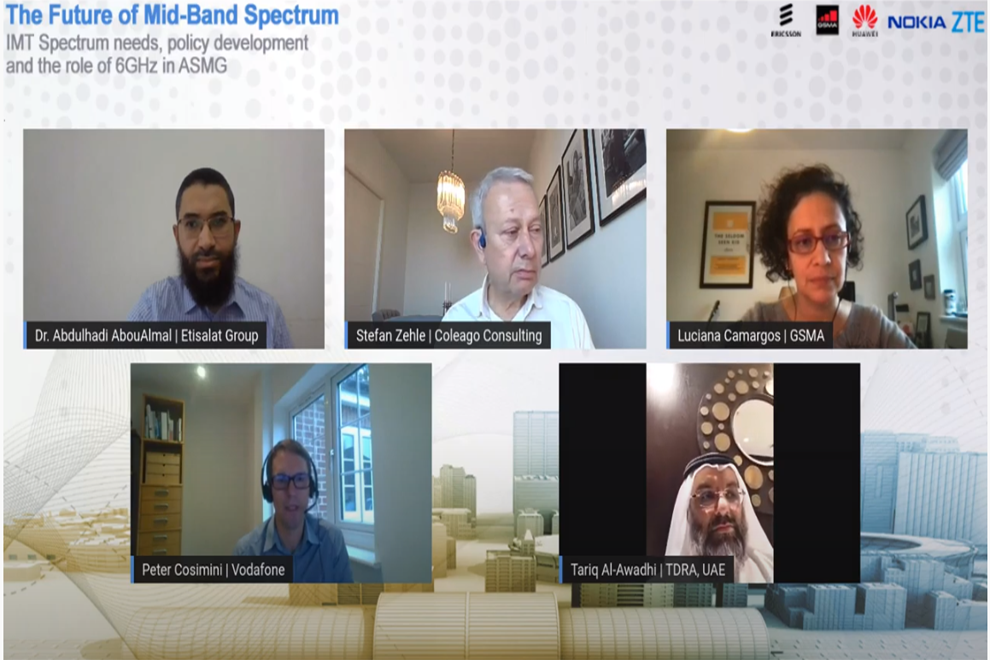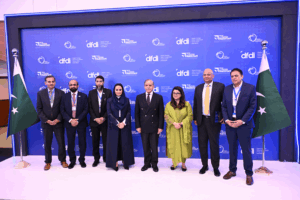Huawei, in partnership with Ericsson, Nokia and ZTE, together with the GSMA, has recently hosted a high-level webinar on IMT called “The Future of Mid-Band Spectrum – IMT Spectrum needs, policy development and the role of 6GHz in ASMG”. Policymakers and leading industry players shared their views and technical research on telecommunications spectrum needs, policy development and the role of 6GHz in the Arab region.
National leaders recognize continuous evolution of mobile technologies is crucial to unleashing the benefits of 5G for society. Widespread deployment of 5G is expected to drive social-economic development.
Many countries have deployed 5G as a strategic development mission, and the telecom sector sustainability is key to digital transformation at a national level. Data shows 180 operators in 72 countries/territories have announced 5G service launches (either mobile or fixed wireless). The UAE, Saudi Arabia, Germany, China, the UK, the US, Japan, South Korea, Singapore, and many others have also released national 5G strategies.
With a growing user base and an increase in new and enhanced Mobile Broadband Services (HD/UHD video, AR/VR services, cloud gaming), Fixed Wireless Access, Smart City use cases etc., traffic will continue to multiply. According to the latest forecast report by ITU, mobile traffic will continue growing to reach 100 GB per capita by 2025 and 250 GB by 2030 (excluding machine-to-machine traffic).
Making additional mid-band licensed spectrum available for 5G is critical to cost-effectively serve citywide capacity needs (including smart cities) and connect small towns. This spectrum includes the 6 GHz range, an essential candidate for licensed mid-band expansion that offers a good balance in terms of coverage and capacity for a wide range of 5G use cases.
Speaking at the webinar, Abdulhadi AbouAlmal, Director, Technology Standardization & Spectrum Management, Etisalat Group, said “500 MHz (5925-6425 MHz) assignment for license-exempt Wireless Access System (WAS) is sufficient and needs to be utilized before further allocations.” AbouAlmal recommended to avoid irreversible actions and to support mobile allocation and IMT identification in 6425 –7125 MHz (700 MHz) under WRC-23 AI 1.2 as flexibility is always an advantage for future decisions.
On his part Peter Cosimini, Strategy Manager, Vodafone Group, observed that some urban 5G network areas will begin to experience capacity limitations within the next six years, as demand surges for enhanced mobile broadband services, fixed wireless, Smart City use cases, etc.
“With no other suitable mid-band spectrum opportunities foreseen in this decade (and perhaps beyond), not allocating the upper 6GHz band (6425-7125MHz) for IMT will have a significant impact on future public 5G network service performance and capacity with negative outcomes on our digital society and economy,” Cosimini said.
Quoting a recent GSMA report on spectrum allocation, Luciana Camargos, Acting Head of Spectrum of GSMA, observed that an additional 2 GHz of licensed mid-band spectrum are needed to allow cell sites to accommodate the increased demand for 5G fixed wireless. “With less spectrum, IMT-2020 requirements are at risk. Otherwise, five times more base stations will be required to sustain demand,” she warned.
Speaking on behalf of co-hosting vendors, Eiman Mohyeldin, Head of Spectrum Standardization at Nokia, observed that WRC-23 is a great opportunity to ensure spectrum harmonization for IMT in the 6425-7125 MHz band as this band constitutes a key opportunity to offer large contiguous channels for citywide 5G coverage. “Appropriate balance between licensed and license-exempt spectrum is required,” she added.
Regarded as the optimal band to provide seamless wide-area coverage and high-capacity connections, licensing 6 GHz to IMT is essential to sustain a healthy economic development in the future. Mobile networks create more economic and social value than any other wireless technology, justifying the mobile industry’s bid for more spectrum reserve. Global collaboration is imperative to developing a 6 GHz telecommunications ecosystem and making it commercially and timely available.












